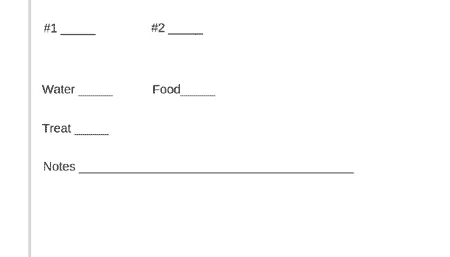Becoming a professional dog walker means embracing a dynamic and often demanding daily routine. It’s more than just strolling with pups; it’s a meticulously managed Dog Walker Schedule that involves early mornings, strategic planning, active walks, and evening responsibilities. This article provides an in-depth look into the typical day of a dedicated dog walker, offering insights into the essential tasks that ensure every dog receives the care and attention they deserve. Understanding this routine is key for anyone considering this rewarding profession or for pet owners seeking to comprehend the commitment involved in professional dog walking.
The Morning Hustle: Scheduling and Communication
The start of a dog walker’s day often begins before the first walk. This crucial period sets the tone for the entire schedule, emphasizing preparation and clear communication. Efficiency in these early hours is paramount to a successful day.
The very first step each morning involves checking all communication channels. This includes phone messages, text messages, and email inboxes for any updates from regular clients. Cancellations, time changes, or requests for additional walks are common and need immediate attention to adjust the daily dog walker schedule. Simultaneously, it’s important to review new client inquiries that may have come in overnight, responding promptly to establish potential meet-and-greets.
After reviewing messages, the next critical task is updating the master schedule. Many professional dog walkers utilize a digital spreadsheet, like an Excel file, to meticulously log dog names, scheduled times, and specific instructions. Any changes from client communications are input here, ensuring the schedule is current and accurate. Following the digital update, a physical notebook is often used to jot down the day’s walks in chronological order, serving as a handy reference throughout the busy hours. This low-tech backup is invaluable for quick checks while on the go.
The final morning preparations involve gathering all necessary physical items. This includes collecting all client keys, counting out business cards to leave notes for owners, and preparing dog treats. Having everything organized before leaving the house prevents delays and ensures a smooth start to the active part of the day.
Preparing for the Road: Before the Walks Begin
With the administrative tasks complete, a dog walker moves into the final stages of preparation before heading out the door. This phase focuses on personal readiness and a crucial double-check of all essentials.
A quick and convenient meal, such as a sandwich, is often prepared to be eaten on the go. Dog walkers are constantly moving, and taking the time for a sit-down meal is rarely an option during peak hours. Until recently, some walkers might even include a walk with their own dog as part of this morning routine, sometimes even bringing them along on client walks if appropriate. This personal connection to dogs further highlights the passion often found in this profession.
One of the most critical steps before leaving is a thorough double-check of all keys. Leaving for a busy day only to realize a key is missing can be a significant setback, causing delays and frustration for both the walker and the client. Ensuring every required key is present and accounted for is a golden rule for any professional dog walker. This meticulousness extends to packing other essentials like water, poop bags, and a wallet, ensuring everything is on hand for a full day of activity. When it comes to managing your pet care business, understanding things like dog sitting rates chicago can be incredibly helpful for setting your own pricing structure.
Executing the Walks: Strategy and Care
The core of a dog walker’s day involves executing the scheduled walks with efficiency, safety, and a deep understanding of each dog’s needs. This is where planning meets practical application.
The order of walks is strategically arranged, not just by time, but by geographical proximity. Dog walkers aim to create a circular route, minimizing driving time and maximizing the time spent walking dogs. This logistical planning is vital for fitting in 12-14 walks on a busy day, such as Thursdays, which are often the busiest. Less time in traffic means more happy dogs.
Upon arrival at a client’s home, the exciting part begins. Dogs, thrilled to see their walker, often provide a joyful greeting that makes the effort worthwhile. The process involves securing the dog’s leash, ensuring the home is locked upon departure, and then embarking on the walk itself. Each dog has its unique preferences and routines, which a good walker remembers—some enjoy treats post-walk, others do not. The focus remains on providing a safe, enjoyable, and stimulating experience for each canine client. Every drop-off includes re-locking the door and safely securing the dog inside before heading to the next appointment. This efficient, dog-centric approach is what defines a professional dog walker schedule.
 Dog walking weekly schedule
Dog walking weekly schedule
An example of a dog walking weekly schedule spreadsheet, showing organized time slots and dog names.
Afternoon to Evening: Winding Down and Preparing for Tomorrow
Even as the active walking part of the day concludes, a dog walker’s responsibilities continue into the afternoon and evening, wrapping up the day’s tasks and laying the groundwork for the next. This phase often involves a mix of physical recovery and administrative follow-up.
Once the bulk of the walks are done, it’s time to relax briefly and grab a bite to eat. This is also a time for personal reflection and, for some, another walk with their own dog—a cherished routine for many pet professionals. The day’s physical demands can be significant, so taking time for personal care, such as icing feet or knees, is not uncommon.
Administrative tasks resume in the evening. Pockets are emptied, and the Excel schedule is updated to reflect completed walks. Any keys for potential night walks are organized with other essentials for easy access. Continuous communication is key in this profession, so checking emails and website inquiries for new messages or replies from earlier communications is a common practice, typically done 2-3 times a day. If night walks are scheduled, a quick check of equipment, like bicycle tires for evening rounds, ensures everything is ready. The life of a pet sitter often means working seven days a week, making this daily cycle a constant commitment. Reflecting on one’s journey in this field can sometimes feel like considering my life in dog years, highlighting the deep connection formed with these animals.
 My dog walking business cards
My dog walking business cards
The back of a dog walking business card, often used to leave notes for pet owners after a walk.
Conclusion: Dedication to the Dog Walker Schedule
The life of a professional dog walker is a testament to dedication and meticulous organization. From the early morning checks and strategic scheduling to the active walks and evening follow-ups, every part of the dog walker schedule is designed to provide exceptional care for furry clients. It’s a demanding but incredibly rewarding profession that requires passion, reliability, and a deep understanding of canine needs.
This insight into a dog walker’s daily journal underscores the hard work and commitment involved. For those considering this path, it highlights the importance of being prepared for an all-encompassing role. For pet owners, it offers a glimpse into the professionalism and care that goes into ensuring their beloved companions are well-looked after.
 Dog walker job description: keys
Dog walker job description: keys
A collection of keys for various clients, a common sight on a dog walker’s table.
Additional Resources
For those interested in delving deeper into the dog walking and pet sitting business, consider exploring professional organizations that offer insurance and valuable resources:
- Pet Sitters Associates (PSA): https://www.petsitllc.com/
- National Association of Professional Pet Sitters (NAPPS): https://petsitters.org/
